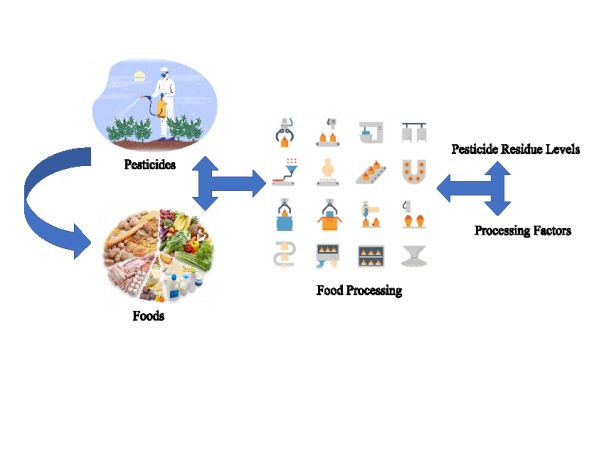JOURNAL 3135
Records of Agricultural and Food Chemistry
Year: 2024 Issue: 3 Special Issue: Abstracts 3rd. TCS, International Food Chemistry Congress February 29-March 03,2024 Antalya Türkiye
p.8 - 8
Viewed 1167 times.
GRAPHICAL ABSTRACT

ABSTRACT
Pesticides are widely used around the world to improve product quality and yield of agricultural products against weeds, fungi and insects. However, excessive, or incorrect use of pesticides results in pesticide residues in the final product, and chronic exposure to dietary pesticides is known to be linked to the development of many diseases. Pesticide analysis results in raw agricultural products are evaluated according to the maximum residue limits (MRL) determined by field trial studies into account for each pesticide. MRLs are not sufficient for risk assessment studies of processed products, especially since many agricultural products are processed before consumption. Therefore, it is necessary to investigate how these active substances or degradation products/metabolites change during processing and to determine the processing factors in order to obtain more information about the dietary intake values of humans. However, whether pesticides remain or are absorbed on the crop surface after application largely depends on the physicochemical properties of the pesticide molecules and the crop itself. Therefore, it is important to develop an effective method to reduce pesticide residue levels in agricultural products. While most pesticides are known to remain on plant surfaces, most can be removed by simple washing and/or peeling or by treatments with different chemical solutions. Although consumers try to prevent the uptake of pesticide residues into the human body by peeling fruits and vegetables or washing them with tap water, the level of reduction remains limited. Various techniques (washing, peeling, boiling and cooking, fermentation, juicing, etc.) and methods used during processing at the industrial or household level often play a role in the process of reducing pesticides; thus, each processing technique has a cumulative effect on reducing pesticide residues. However, some processes may lead to increased residue levels due to concentration effects and/or affinity to the lipid moiety. Herein, a detailed summary of the effects of different food processing techniques of commercial and household processing on the fate of pesticide residues in foods, their reduction rates, and the impact of processing factors is presented. [1–6].
KEYWORDS- Pesticide residue
- commercial and household processing
- processing factors
- foods